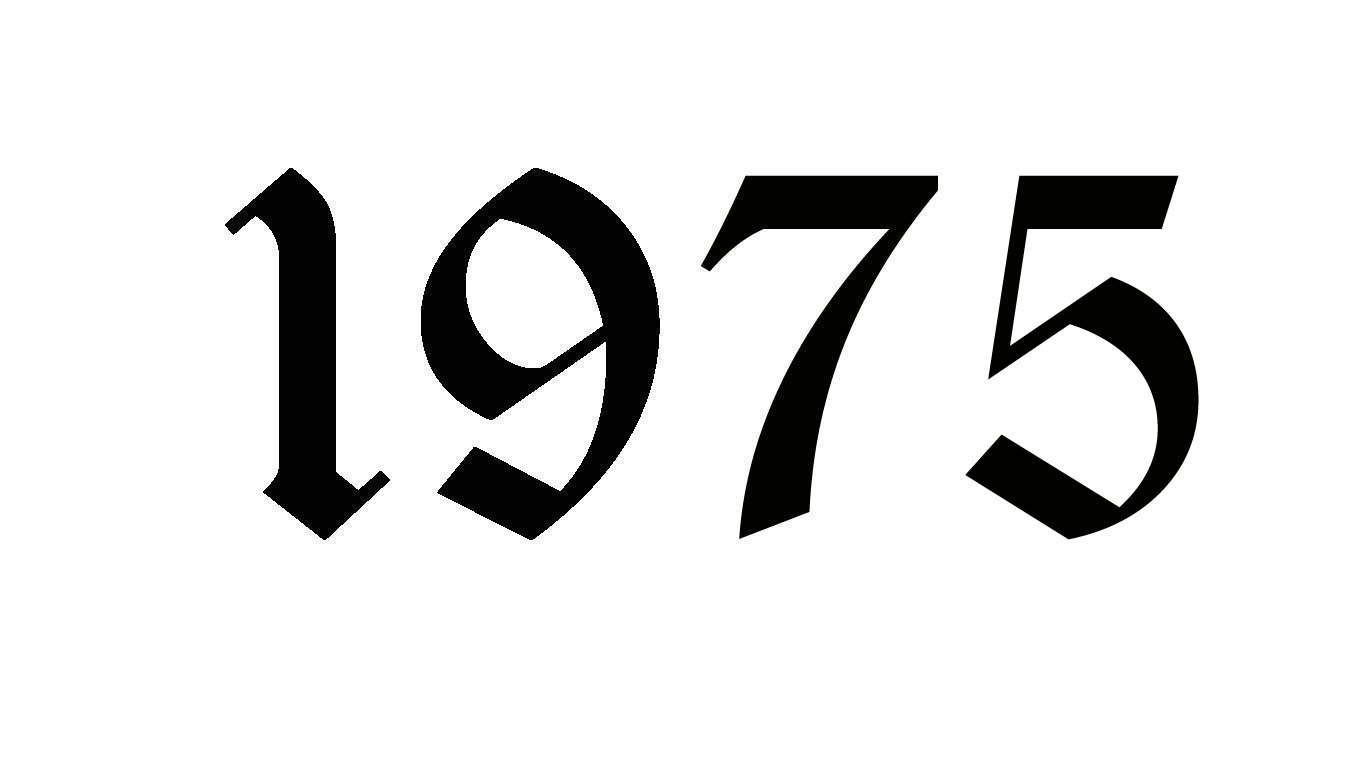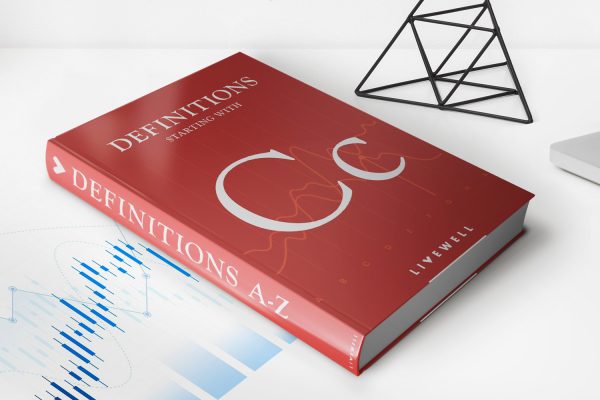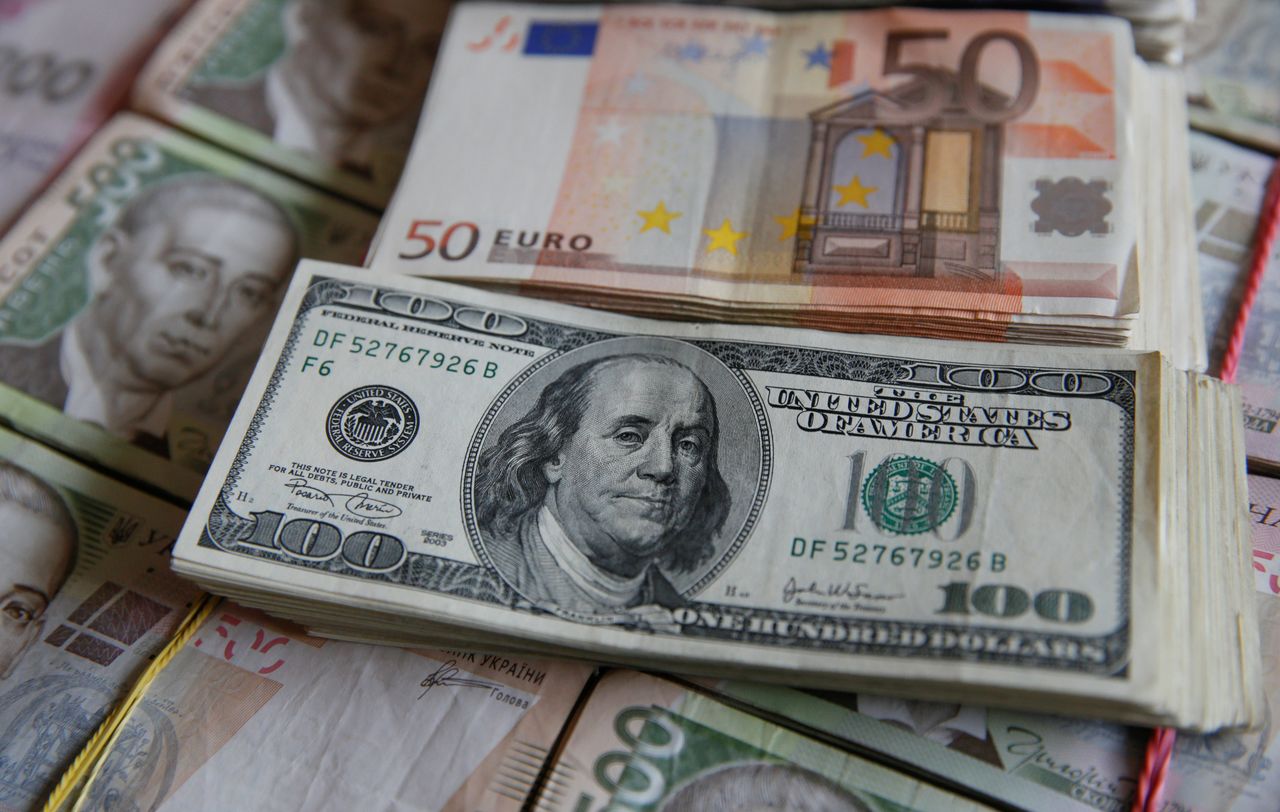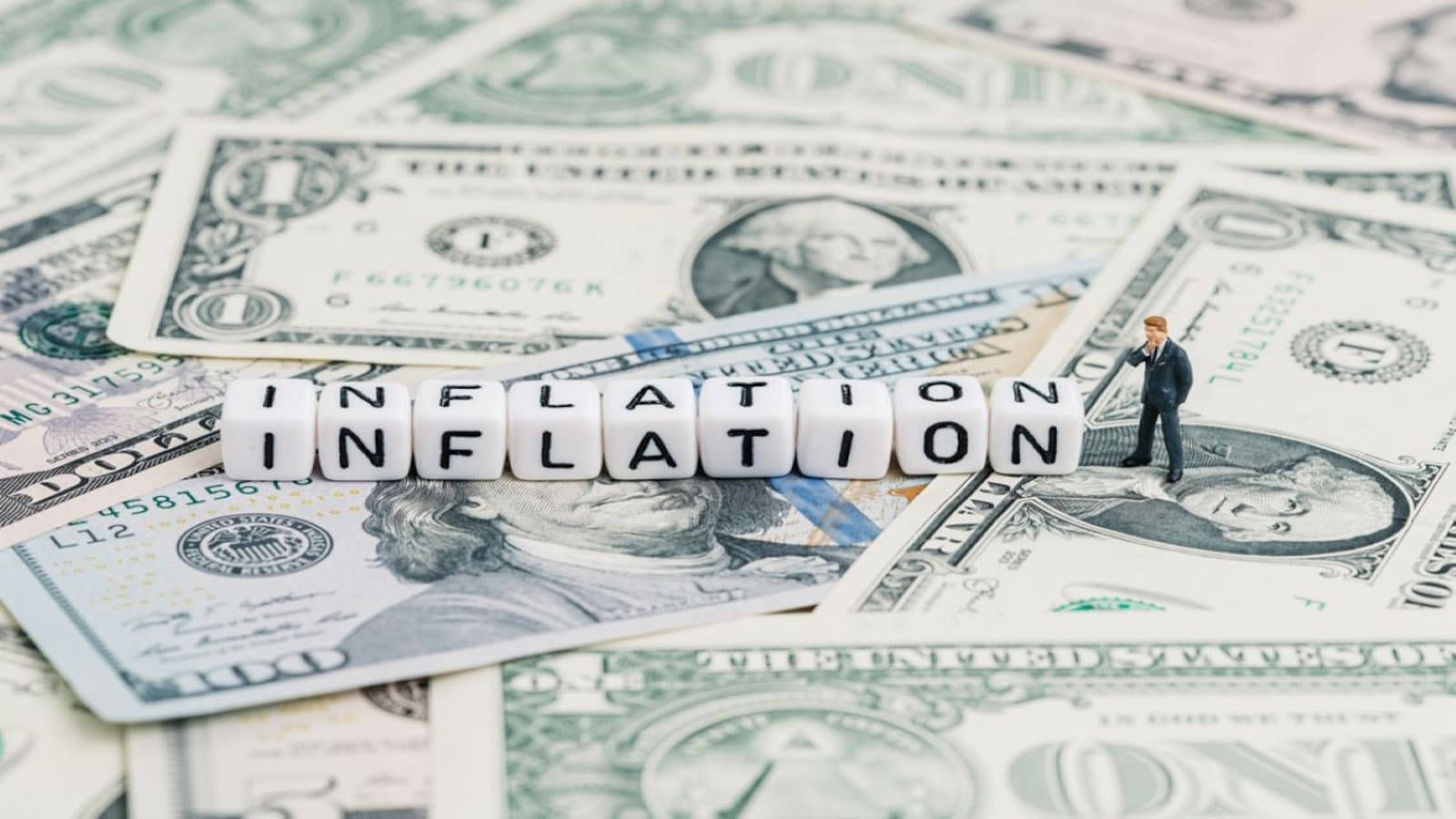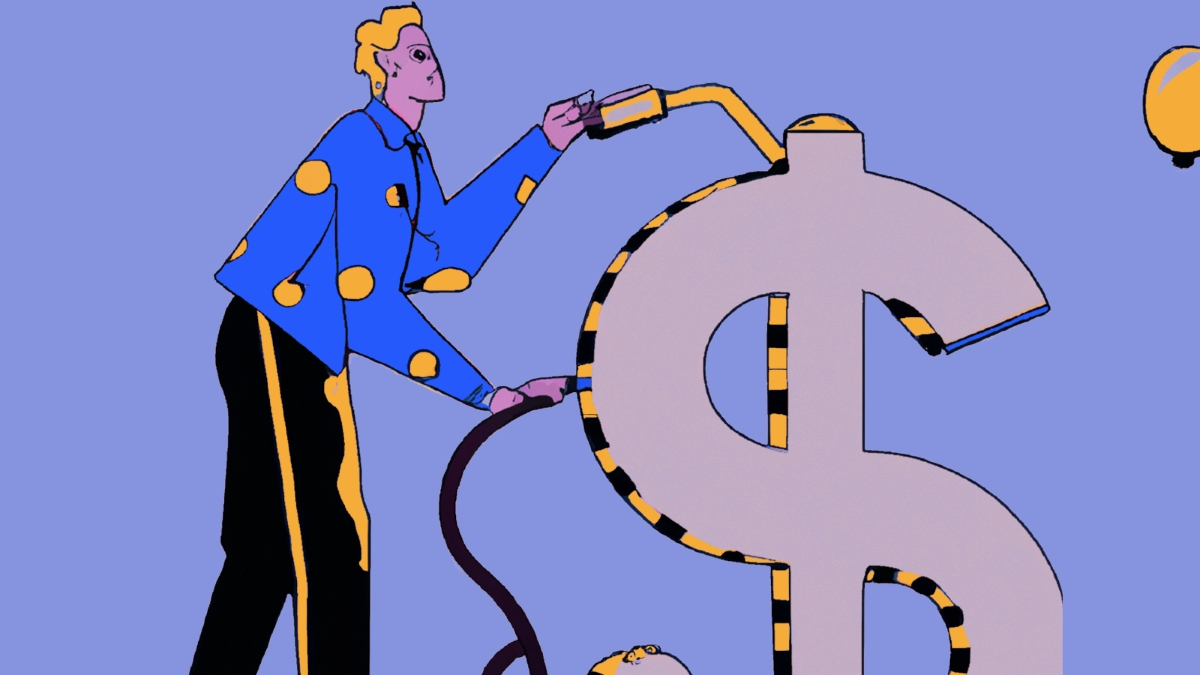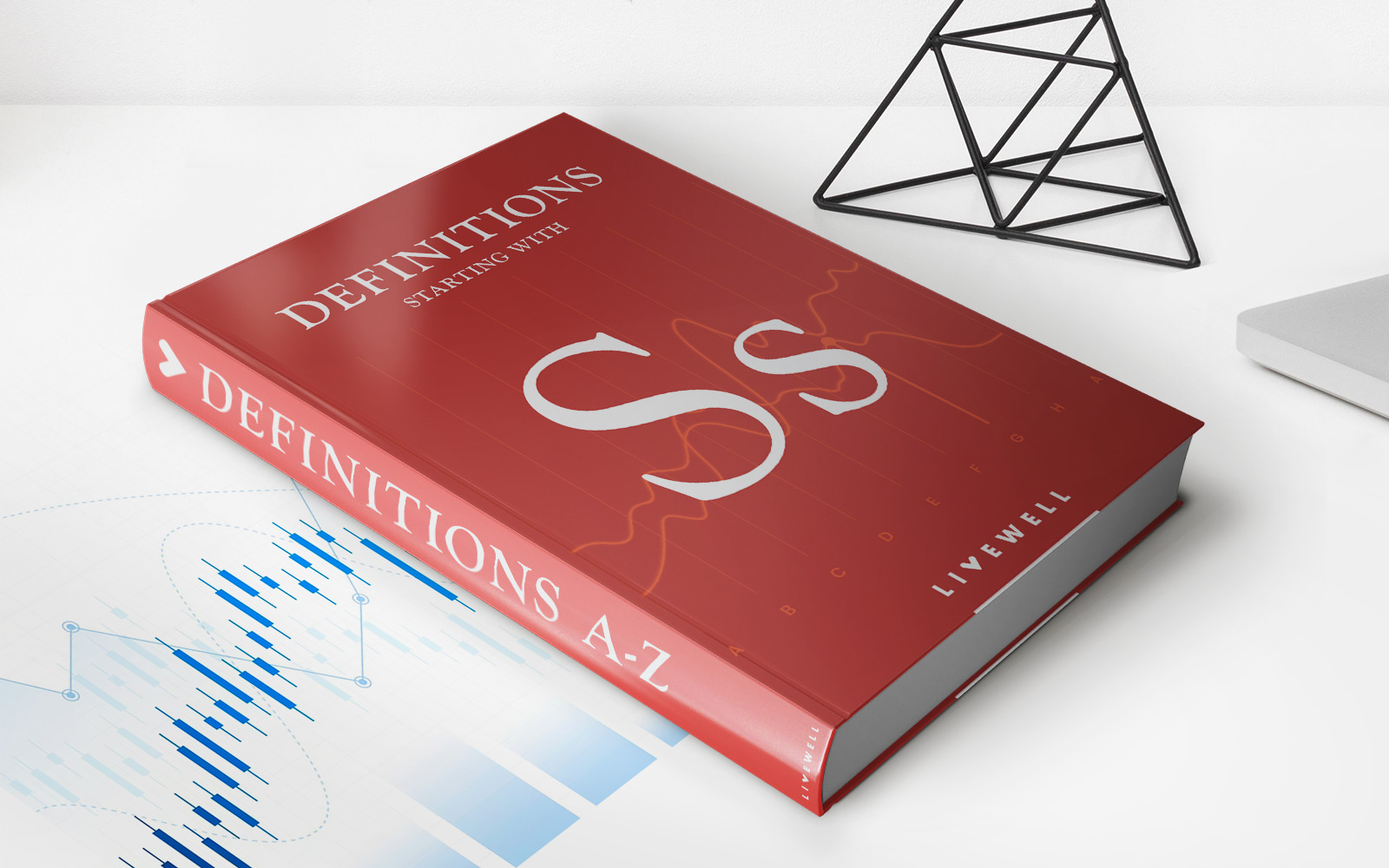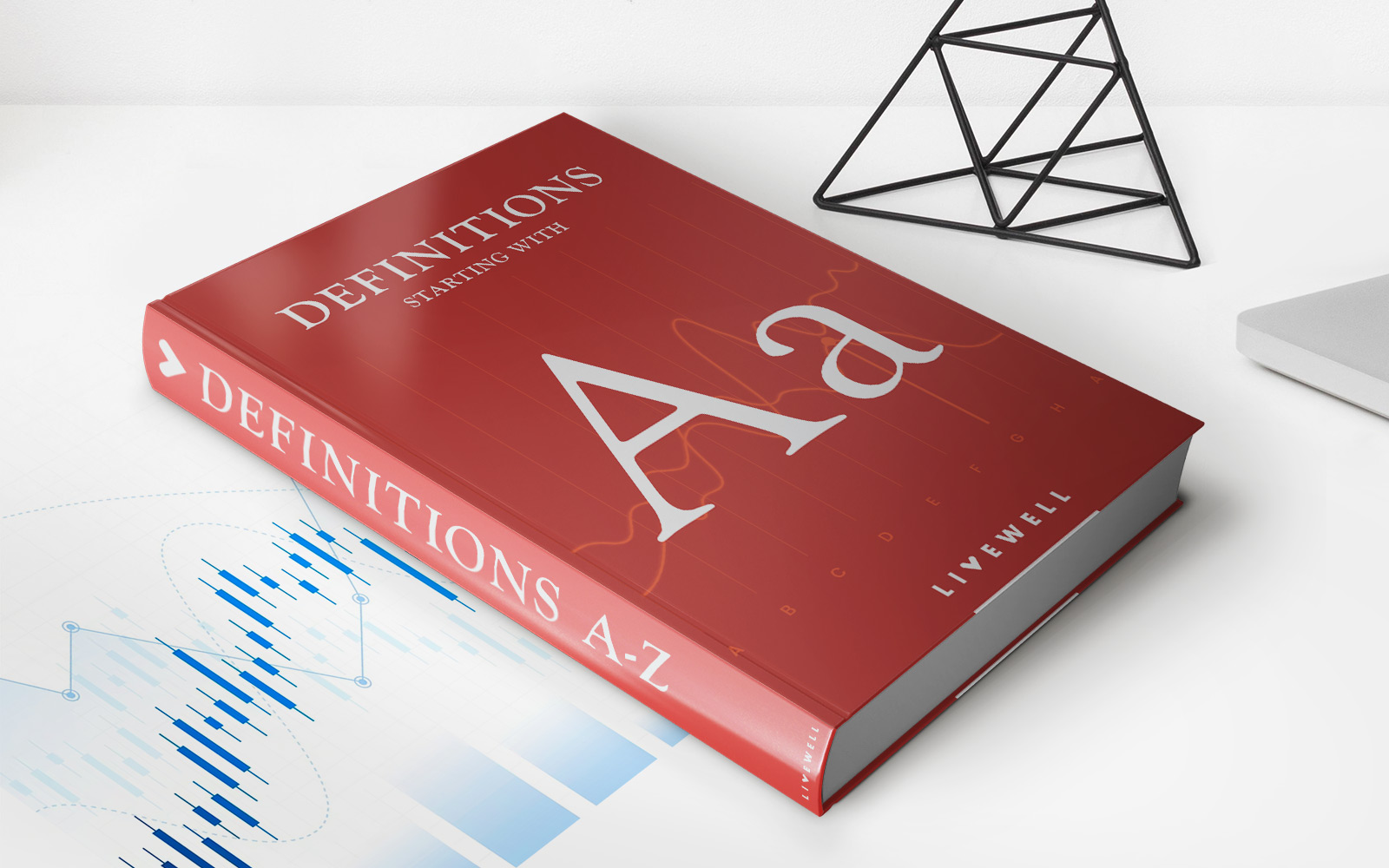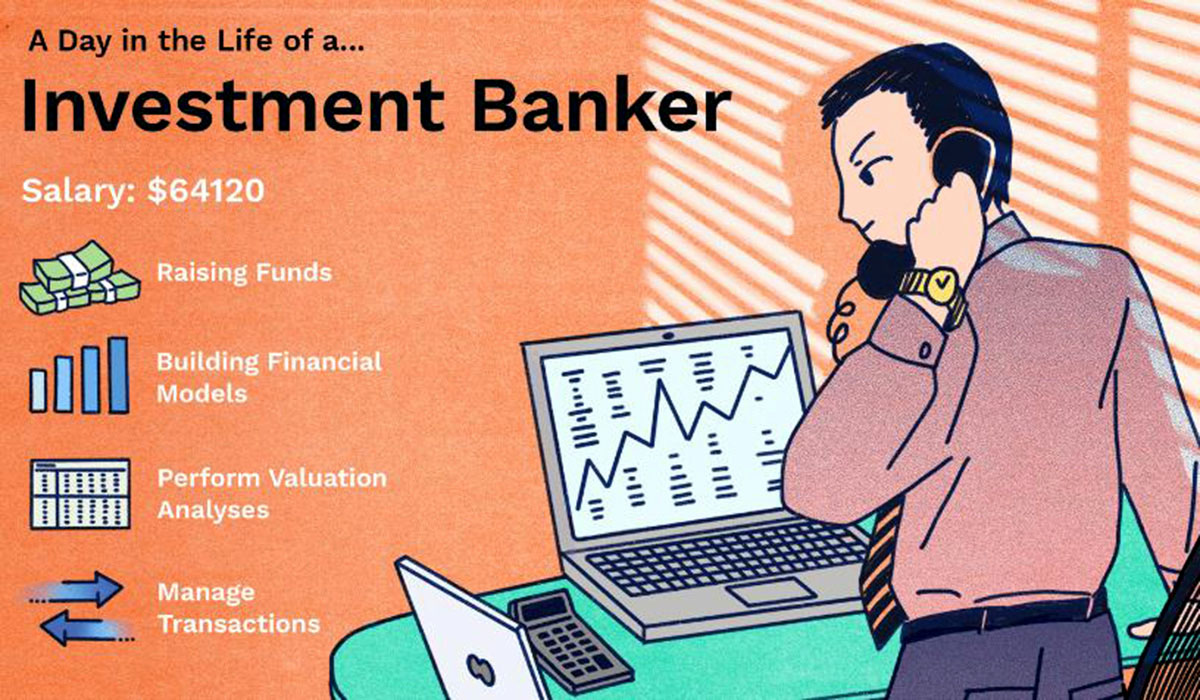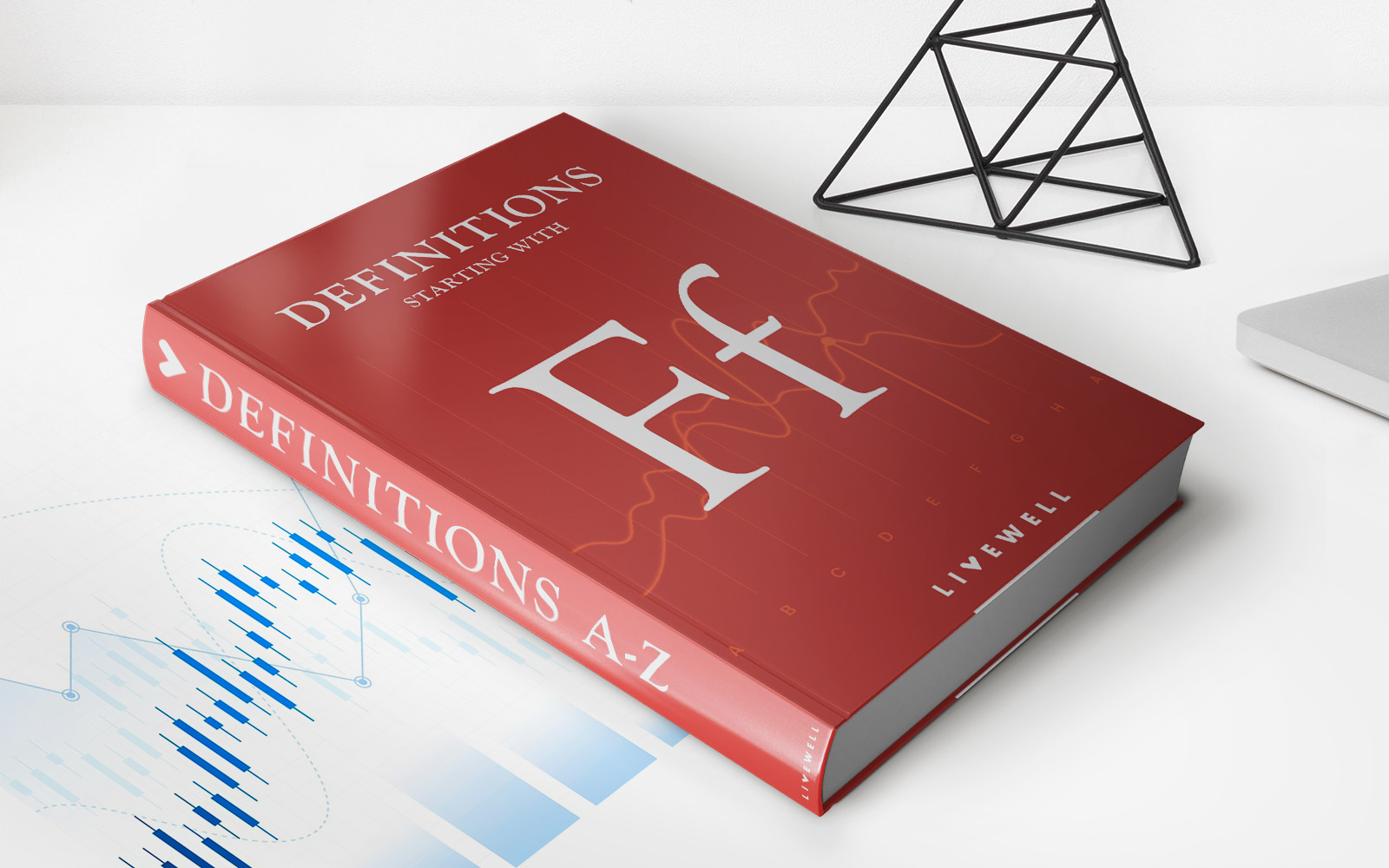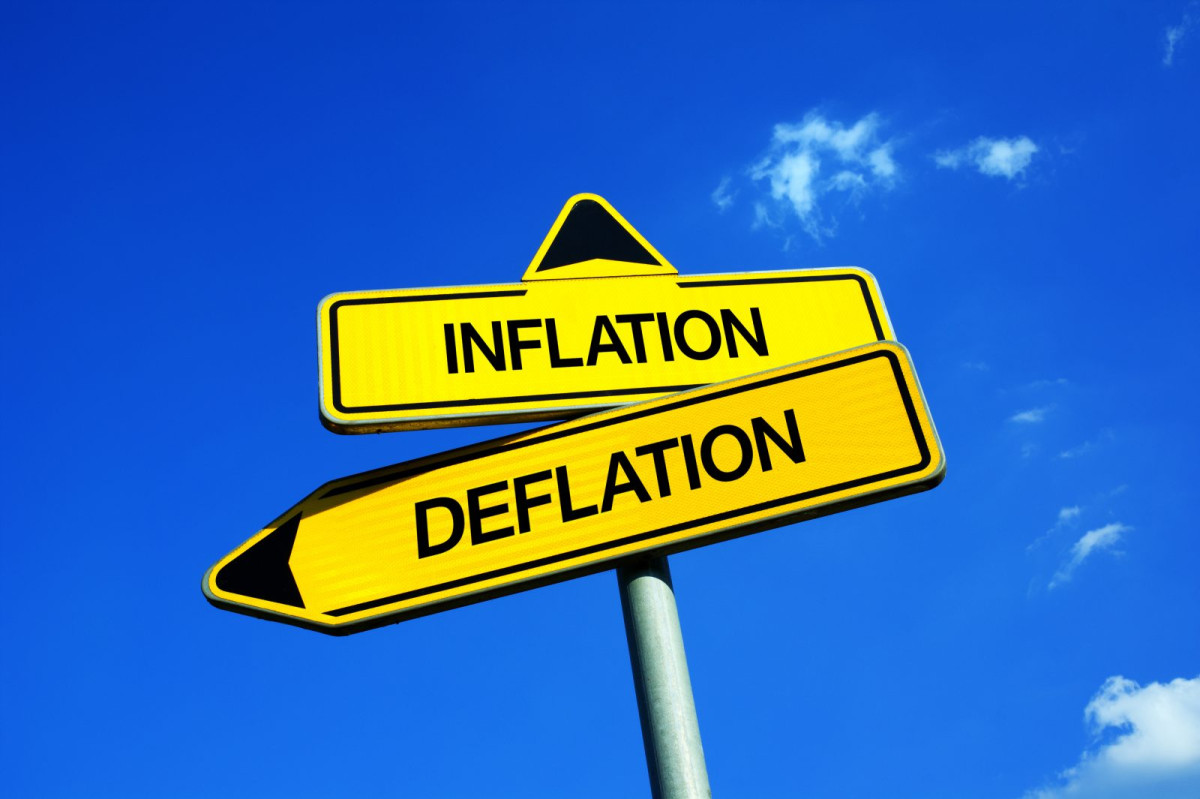

Finance
What Are Inflation And Deflation?
Published: October 19, 2023
Learn about inflation and deflation in finance. Understand the causes, impact, and ways to mitigate these economic phenomena. Stay informed and make better financial decisions.
(Many of the links in this article redirect to a specific reviewed product. Your purchase of these products through affiliate links helps to generate commission for LiveWell, at no extra cost. Learn more)
Table of Contents
Introduction
Inflation and deflation are two fundamental concepts in the field of finance that have a significant impact on economies and individual finances. Understanding these concepts is crucial for making informed financial decisions and planning for the future.
In simple terms, inflation refers to the general increase in prices of goods and services over time, resulting in the decrease in the purchasing power of money. On the other hand, deflation is the opposite of inflation and refers to the general decrease in prices, which can lead to an increase in the purchasing power of money.
Both inflation and deflation are influenced by various factors, such as economic conditions, government policies, and global events. They can have widespread implications on various aspects of the economy, including wages, investments, interest rates, and consumer spending.
This article aims to provide a comprehensive understanding of inflation and deflation, discussing their causes, types, effects, and methods of controlling them. By the end of this article, you will have a clear understanding of these concepts and their significance in the financial world.
Understanding Inflation
Inflation is an economic phenomenon characterized by a sustained increase in the general price level of goods and services within an economy over a period of time. It means that, on average, the prices of goods and services are increasing, resulting in a decrease in the purchasing power of money.
There are several key factors that contribute to the occurrence of inflation. One of the primary causes is an increase in the money supply within an economy. When there is more money available, consumers have more purchasing power, which leads to an increase in demand for goods and services. This increased demand, in turn, pushes up prices.
Another factor that fuels inflation is cost-push inflation. This occurs when the cost of production increases, leading to higher prices for finished goods and services. For example, an increase in the cost of raw materials or labor can result in higher production costs, which are then passed on to consumers in the form of higher prices.
Additionally, inflation can be driven by demand-pull factors. This means that when there is excess demand for goods and services, the prices increase to meet the rising demand. This can happen during periods of economic growth or when there is excessive government spending.
There are different types of inflation that can occur, each with its unique characteristics. Four common types include:
- CPI Inflation: This refers to the overall increase in the Consumer Price Index, which measures the average price change of a basket of goods and services consumed by households.
- Core Inflation: Core inflation measures the change in prices without including volatile items such as food and energy, which can have temporary fluctuations.
- Cost-push Inflation: As mentioned earlier, this type of inflation occurs when the cost of production increases and is passed on to consumers in the form of higher prices.
- Hyperinflation: Hyperinflation is an extreme form of inflation characterized by an uncontrollable increase in prices and a rapid devaluation of money. This can result from factors such as excessive money printing or political instability.
The effects of inflation can be both positive and negative. On one hand, moderate inflation can stimulate economic growth by encouraging spending and investment. On the other hand, high inflation erodes the purchasing power of money, reduces consumer confidence, and can lead to economic instability.
Central banks and governments employ various measures to control inflation, such as adjusting interest rates, implementing fiscal policies, and regulating the money supply. These actions aim to strike a balance between price stability and economic growth.
Causes of Inflation
Inflation is caused by a combination of factors that affect the overall price level of goods and services within an economy. Understanding these causes is crucial for policymakers and individuals alike to identify the root of inflationary pressures and take appropriate measures to mitigate its effects.
One of the primary causes of inflation is an increase in the money supply within the economy. When there is more money circulating in the system, individuals and businesses have greater purchasing power, which leads to increased demand for goods and services. This increased demand puts upward pressure on prices, resulting in inflation.
Another cause of inflation is demand-pull inflation. This occurs when there is excess demand for goods and services compared to their supply. When the demand surpasses the available quantity, prices tend to rise as businesses try to meet the increasing demand. Demand-pull inflation often occurs during times of economic growth or when there is excessive government spending.
Cost-push inflation is another significant contributor to inflationary pressures. This type of inflation occurs when the cost of production increases, and businesses pass on these increased costs to consumers through higher prices. Factors that drive cost-push inflation include rising wages, increased raw material costs, or higher taxes and regulations imposed on businesses.
Inflation can also be fueled by expectations. When individuals and businesses anticipate future price increases, they tend to adjust their behavior accordingly. This can lead to self-fulfilling inflation as people demand higher wages, businesses raise prices in anticipation, and the overall price level increases.
Additionally, structural imbalances within the economy can contribute to inflation. These imbalances can include bottlenecks in the supply chain, shortages of key resources or commodities, or disruptions in production that limit the availability of goods and services. When the supply is constrained, prices tend to rise.
It is essential to note that different economies and regions may experience varying causes of inflation. Factors such as government policies, international trade dynamics, and global events can also influence inflationary pressures.
By identifying and understanding the causes of inflation, policymakers can implement appropriate measures to address inflationary pressures. These measures may include monetary policy interventions, fiscal policy adjustments, regulatory reforms, or promoting productivity-enhancing measures in the economy.
Types of Inflation
Inflation can manifest in different forms, each characterized by unique factors or circumstances. Understanding the various types of inflation helps in identifying the underlying causes and implementing appropriate strategies to manage its effects.
1. CPI Inflation: Consumer Price Index (CPI) inflation is one of the most common types of inflation. It refers to the overall increase in the average prices of goods and services consumed by households. The CPI is calculated by tracking the price changes of a basket of goods and services representative of consumer spending patterns. CPI inflation is influenced by factors like changes in production costs, supply and demand dynamics, and government policies.
2. Core Inflation: Core inflation is derived by excluding volatile items such as food and energy from the CPI basket. This measure aims to provide a more accurate depiction of underlying inflation trends. By eliminating the price fluctuations of these volatile items, core inflation helps assess the persistent inflationary pressures in the economy.
3. Cost-push Inflation: Cost-push inflation occurs when the cost of production for goods and services increases. This can happen due to various factors such as rising wages, increased raw material costs, or higher taxes and regulations imposed on businesses. When production costs rise, businesses pass on these additional expenses to consumers through higher prices, resulting in cost-push inflation.
4. Demand-pull Inflation: Demand-pull inflation occurs when there is excess demand for goods and services compared to their supply. When consumers have more money to spend or when government spending increases, demand for goods and services rises. If supply fails to keep up with this increased demand, prices rise as businesses attempt to meet the growing consumer demand.
5. Hyperinflation: Hyperinflation is an extreme form of inflation characterized by exponentially increasing prices and a rapid devaluation of the currency. This typically occurs during times of severe economic instability, political upheaval, or when there is an excessive increase in the money supply. Hyperinflation erodes the value of money rapidly, resulting in economic chaos and adversely affecting the livelihoods of individuals.
6. Stagflation: Stagflation is a unique type of inflation characterized by a stagnant economy coupled with high inflation rates. It is a challenging economic condition where an economy experiences low economic growth (or even contraction) along with elevated inflation levels. This can create a dilemma for policymakers as the traditional tools used to stimulate growth may worsen inflationary pressures.
Understanding the different types of inflation helps economists, policymakers, and individuals distinguish between temporary price fluctuations and persistent inflationary trends. This knowledge aids in formulating appropriate monetary and fiscal policies to manage inflation effectively.
Effects of Inflation
Inflation has a profound impact on various aspects of the economy, businesses, and individuals’ financial well-being. Understanding the effects of inflation is crucial for making informed financial decisions and developing strategies to mitigate its negative consequences.
1. Reduction in Purchasing Power: Inflation erodes the purchasing power of money. As the general price level increases, the same amount of money can buy fewer goods and services. Individuals find that their income does not stretch as far, leading to a decline in their standard of living.
2. Increase in Cost of Living: Inflation drives up the cost of living by increasing the prices of essentials such as food, housing, transportation, and healthcare. This puts financial pressure on households, particularly those with fixed or low incomes, as they struggle to meet rising expenses.
3. Impact on Savings and Investments: Inflation can erode the value of savings and investments. If the inflation rate outpaces the interest earned on savings, the purchasing power of the accumulated funds diminishes over time. This affects individuals’ ability to achieve their financial goals and may necessitate adjusting investment strategies to account for potential inflationary risks.
4. Effect on Borrowing and Debt: Inflation can have both positive and negative effects on borrowing and debt. Debtors benefit from inflation, as the value of the debt decreases over time in real terms. On the other hand, lenders may adjust interest rates to compensate for inflation, making borrowing more expensive.
5. Uncertainty and Economic Instability: High inflation levels introduce uncertainty into the economy, creating challenges for businesses and investors. The fluctuation in prices makes it difficult to set prices, plan for the future, or make long-term investment decisions. This can hinder economic growth and stability.
6. Redistribution of Wealth: Inflation can lead to a redistribution of wealth between different sectors of society. If wages fail to keep pace with rising prices, workers may experience a decline in real wages. Conversely, individuals with assets that appreciate during inflation, such as real estate or stocks, may see their wealth increase.
7. Impact on Interest Rates: Inflation generally leads to higher interest rates. Central banks often raise interest rates to combat inflation by reducing the money supply and curbing excessive spending. Higher interest rates can affect borrowing costs, mortgage rates, and business investments.
8. Effects on International Trade: Inflation can have implications for international trade. If a country’s inflation rate is higher than that of its trading partners, the country’s exports may become relatively more expensive, affecting competitiveness in international markets.
Understanding the effects of inflation is crucial for policymakers, businesses, and individuals to anticipate its impact and take appropriate measures to protect their financial well-being. Employing strategies such as investing in inflation-protected securities, diversifying income streams, and adjusting expenditure patterns can help mitigate the adverse effects of inflation.
Controlling Inflation
Controlling inflation is a critical task for policymakers as it directly affects the stability and well-being of an economy. Various strategies and tools are employed to manage and curb inflationary pressures. These measures aim to strike a balance between price stability and sustainable economic growth.
1. Monetary Policy: Central banks play a key role in controlling inflation through monetary policy. They adjust key interest rates, such as the benchmark lending rate, to influence borrowing costs, consumer spending, and investment. By raising interest rates, central banks aim to reduce money supply, curbing excessive demand and inflationary pressures. Conversely, lowering interest rates can encourage borrowing and stimulate economic activity.
2. Fiscal Policy: Governments also utilize fiscal policy to control inflation. This involves adjusting tax rates and government spending. By increasing taxes or reducing government spending, governments can reduce the amount of money circulating in the economy and dampen inflationary pressures. Moreover, fiscal policies can encourage savings and discourage excessive consumption.
3. Supply-side Policies: Supply-side policies aim to increase the production and supply of goods and services, tackling inflation from the perspective of the aggregate supply. These policies include measures to boost productivity, remove barriers to entry for new businesses, incentivize investments in infrastructure, and improve efficiency in markets. By promoting a more competitive and productive economy, supply-side policies help alleviate inflationary pressures.
4. Wage and Price Controls: In certain cases, governments may resort to implementing wage and price controls to directly address inflation. These controls set limits on wage increases and impose restrictions on price hikes for certain goods and services. However, wage and price controls are typically considered temporary measures and can have unintended consequences, such as distorted market behavior and supply shortages.
5. Exchange Rate Policy: Countries with flexible exchange rate regimes can use exchange rate policy as a tool to manage inflation. Adjusting the exchange rate can impact import prices and, therefore, consumer prices. By devaluing the currency, export competitiveness may increase, potentially reducing inflationary pressures. However, exchange rate policies must be carefully managed to avoid negative consequences, such as decreasing purchasing power or leading to capital flight.
6. Public Confidence and Education: Maintaining public confidence in the economy and educating individuals about inflation can also contribute to controlling inflation. When individuals understand the causes and consequences of inflation, they can make informed decisions about spending, saving, and investing. Furthermore, transparent communication from central banks and governments is crucial to engendering trust and confidence in the measures taken to control inflation.
It is important to note that there is no one-size-fits-all approach to controlling inflation. The appropriate mix of policy measures varies depending on the specific circumstances and challenges faced by each economy. A combination of monetary, fiscal, and supply-side policies, supported by effective communication and public confidence, can help manage inflation and maintain price stability.
Understanding Deflation
Deflation is the opposite of inflation and refers to a sustained decrease in the general price level of goods and services within an economy. In simple terms, it means that prices are falling over time, resulting in an increase in the purchasing power of money.
Deflation can occur due to several factors. One primary cause is a decrease in the money supply within the economy. When there is less money in circulation, consumers have less purchasing power, leading to decreased demand for goods and services. This reduced demand puts downward pressure on prices, resulting in deflation.
Another factor that can lead to deflation is a decrease in aggregate demand. This can occur during periods of economic recession or when there is a decrease in consumer confidence. When individuals are uncertain about their financial future, they tend to cut back on spending, leading to lower demand and subsequently lower prices.
Technological advancements and improvements in productivity can also contribute to deflation. When businesses find ways to produce goods and services more efficiently, the cost of production decreases. This can lead to lower prices as businesses pass on these cost savings to consumers.
Deflation can have both positive and negative effects on the economy and individuals:
- Positive Effects: Deflation can benefit consumers as it increases their purchasing power. As prices decrease, individuals can buy more goods and services with the same amount of money. Additionally, deflation can incentivize saving as the value of money increases over time.
- Negative Effects: Deflation can have detrimental effects on businesses and the economy. Falling prices can lead to a decrease in revenues and profits, making it harder for businesses to meet their financial obligations and invest in growth. Deflation can also increase the burden of debt, as debt becomes more costly to repay in real terms.
Central banks and governments employ various measures to combat deflation and stimulate economic growth. These measures include lowering interest rates to encourage borrowing and spending, implementing expansionary fiscal policies to increase government spending, and implementing quantitative easing programs to increase the money supply.
Understanding deflation is crucial for policymakers and individuals to anticipate its potential impact on the economy and adjust their financial strategies accordingly. Balancing the risks and benefits of deflation requires careful consideration and proactive measures to ensure sustained economic stability and growth.
Causes of Deflation
Deflation is a complex economic phenomenon characterized by a sustained decrease in the general price level of goods and services within an economy. Understanding the causes of deflation is crucial for policymakers and individuals to identify the underlying factors contributing to the decline in prices.
One of the primary causes of deflation is a decrease in aggregate demand. This can occur during periods of economic recession or when there is a decrease in consumer confidence. When individuals are concerned about their financial well-being or uncertain about the future, they tend to reduce their spending, leading to lower demand for goods and services. With fewer consumers willing to buy, businesses may be forced to lower prices to stimulate sales, resulting in a deflationary environment.
Technological advancements and improvements in productivity can also contribute to deflation. When businesses find more efficient ways to produce goods and services, the cost of production decreases. This can lead to lower prices as businesses pass on these cost savings to consumers. Additionally, globalization and increased competition in the global market can drive prices down as businesses strive to remain competitive.
Another cause of deflation is a decrease in the money supply. When there is a shortage of money in the economy, either due to a reduction in the money supply or a decrease in lending by financial institutions, it can limit spending and lead to lower demand and lower prices. Additionally, a significant decrease in money supply can cause a contraction in credit availability, impacting businesses’ ability to invest and expand, thereby further contributing to deflationary pressures.
Deflation can also be influenced by external factors such as changes in exchange rates or shifts in international trade dynamics. A strengthening currency can lead to decreased import prices, contributing to deflationary pressures. Changes in global supply chains or an increase in cheaper imports can also put downward pressure on domestic prices.
It is important to note that deflation, like inflation, can have both positive and negative effects on the economy and individuals. While falling prices may increase the purchasing power of consumers and encourage saving, deflation can also have detrimental effects on businesses, leading to lower revenues and profits, increased burden of debt, and disincentives for investment.
Managing deflation can be challenging for policymakers as it requires careful calibration of monetary and fiscal policies. These measures may include implementing expansionary monetary policy, lowering interest rates, increasing government spending, and implementing measures to stimulate demand and boost economic activity.
Understanding the causes of deflation is crucial for policymakers to implement appropriate measures to mitigate its negative impacts and promote sustainable economic growth. By closely monitoring economic indicators and adjusting policies accordingly, it is possible to navigate the challenges posed by deflationary pressures.
Types of Deflation
Deflation, characterized by a sustained decrease in the general price level of goods and services, can manifest in different forms depending on the underlying factors and circumstances. Understanding the various types of deflation helps in identifying the root causes and implementing appropriate strategies to mitigate its effects.
1. Demand-Pull Deflation: Demand-pull deflation occurs when there is a decrease in aggregate demand for goods and services in the economy. This can result from factors such as economic recession, declining consumer confidence, or reduced government spending. With less demand for goods and services, businesses lower prices to entice consumers, leading to a deflationary spiral.
2. Cost-Push Deflation: Cost-push deflation is driven by a decrease in production costs. This can happen due to factors such as reduced raw material prices, lower wages, or increased productivity. When production costs decrease, businesses may lower prices to maintain competitiveness and attract customers.
3. Structural Deflation: Structural deflation occurs when there are fundamental shifts in the economy or industry that lead to a long-term decrease in prices. This can be caused by technological advancements, improved efficiency, or changes in global supply chains. Structural deflation often leads to lower prices across multiple sectors, impacting various industries.
4. Financial Deflation: Financial deflation occurs when there is a contraction in credit availability and a decrease in the money supply within the financial system. This can be driven by factors such as tighter lending standards, financial crises, or changes in monetary policy. As a result, businesses and individuals have limited access to credit, leading to decreased spending and lower prices.
5. Debt-Deflation: Debt-deflation occurs when widespread defaults and deleveraging lead to a decrease in spending and economic activity. During periods of deflation, the real value of debt increases, making it more difficult for borrowers to repay their debts. This can further depress demand, leading to a downward spiral of falling prices and economic contraction.
It is important to note that deflation can have both positive and negative effects on the economy and individuals. While falling prices may increase the purchasing power of consumers, it can also lead to decreased business revenues, increased burden of debt, and disincentives for investment and spending, which can result in economic stagnation.
Managing deflation requires a combination of monetary and fiscal policies aimed at stimulating demand, increasing money supply, and promoting economic growth. By closely monitoring economic indicators and employing appropriate measures, policymakers can navigate the challenges posed by deflation, ensuring a stable and resilient economy.
Effects of Deflation
Deflation, characterized by a sustained decrease in the general price level of goods and services, can have significant effects on the economy, businesses, and individuals. Understanding these effects is crucial for policymakers and individuals to make informed financial decisions and develop strategies to mitigate the negative consequences of deflation.
1. Decreased Consumer Spending: Deflation can lead to decreased consumer spending as individuals anticipate further price declines. When consumers expect prices to continue falling, they delay purchases, which can have a detrimental impact on businesses and the overall economy.
2. Lower Business Revenues and Profits: Businesses often experience reduced revenues and profits during deflationary periods. Decreased demand and lower prices erode their profitability, making it challenging to cover operating costs and meet financial obligations. This can lead to reduced investments, layoffs, and even business closures.
3. Increased Real Value of Debt: Deflation increases the real value of debt. As prices fall, the purchasing power of money increases, making it more difficult for borrowers to repay their debts. This can result in increased default rates and financial distress, creating a negative spiral for both individuals and businesses.
4. Risk of Deflationary Spiral: Deflation can create a deflationary spiral, where falling prices lead to reduced spending, which further reduces demand and puts additional downward pressure on prices. This can create a cycle of economic contraction and stagnation, challenging to break out of without appropriate policy measures.
5. Increased Real Wages: While deflation can have negative effects, one potential positive impact is an increase in real wages. As prices decrease, the same amount of nominal income can buy more goods and services, effectively increasing the purchasing power of wages.
6. Impacts on Borrowing and Investment: Deflation can disincentivize borrowing and investments. Borrowers face increased real value of debt, making it more expensive to repay loans. Additionally, businesses may be hesitant to invest in new projects or expand due to the low-demand environment and uncertain economic conditions.
7. Encouragement of Saving: Deflation can incentivize saving as the value of money increases over time. Individuals may choose to delay consumption and save for the future, which can have long-term implications for economic growth and aggregate demand.
8. Challenges for Central Banks: Central banks face challenges in stimulating the economy during deflationary periods. Traditional monetary policy tools, such as lowering interest rates, may have limited effectiveness when interest rates are already near zero.
It is important for policymakers to closely monitor deflationary pressures and implement appropriate measures to counteract its negative effects. This may involve expansionary monetary policies, targeted fiscal stimulus, and efforts to boost consumer and business confidence. By taking proactive steps, economies can work to mitigate the adverse impacts of deflation and promote sustainable growth.
Controlling Deflation
Controlling deflation, which refers to a sustained decrease in the general price level of goods and services, is a crucial task for policymakers to maintain economic stability and prevent a deflationary spiral. Various strategies and tools can be employed to address deflationary pressures and stimulate economic growth.
1. Monetary Policy: Central banks play a vital role in controlling deflation through monetary policy. They can lower interest rates to encourage borrowing and spending, effectively increasing the money supply in the economy. By making borrowing more affordable, central banks aim to stimulate demand and counter deflationary pressures.
2. Fiscal Policy: Fiscal policy measures can also be implemented to combat deflation. Governments can increase public spending or reduce taxes to boost aggregate demand, encourage consumer spending, and promote business investments. These expansionary fiscal policies inject money into the economy and help counter the negative effects of deflation.
3. Quantitative Easing: In extreme cases of deflation or during financial crises, central banks may resort to quantitative easing (QE). QE involves the purchase of government bonds and other financial assets by the central bank, which increases the money supply and stimulates economic activity. This measure aims to prevent deflation from spiraling out of control.
4. Structural Reforms: Implementing structural reforms can address underlying causes of deflation. These reforms may involve measures to enhance productivity, remove barriers to competition, promote innovation, and encourage investment. By increasing the efficiency and competitiveness of the economy, structural reforms can help counter deflationary pressures.
5. Exchange Rate Policies: In countries with flexible exchange rate regimes, exchange rate policies can be utilized to combat deflation. A depreciation in the value of the national currency can make exports more competitive and stimulate demand from foreign markets. This can help boost economic activity and mitigate deflationary pressures.
6. Communication and Coordination: Clear communication and coordination between policymakers, central banks, and other relevant stakeholders are crucial in combating deflation. Building public confidence through transparent communication about policy measures and the commitment to maintain price stability can help alleviate deflationary expectations and encourage spending and investment.
It is essential to note that the effectiveness of these measures in controlling deflation may vary depending on the specific economic circumstances and the severity of the deflationary pressures. Furthermore, policymakers need to strike a delicate balance between stimulating demand to counter deflation and ensuring long-term sustainability and price stability.
By harnessing the appropriate mix of monetary, fiscal, structural, and exchange rate policies, policymakers can work towards stabilizing prices, stimulating economic growth, and preventing a deflationary spiral.
Conclusion
Inflation and deflation are two fundamental concepts in finance that have a significant impact on economies and individual finances. Understanding these concepts and their causes, types, effects, and methods of control is crucial for making informed financial decisions, managing risks, and planning for the future.
Inflation occurs when there is a sustained increase in the general price level, leading to a decrease in the purchasing power of money. It can be caused by factors such as an increase in the money supply, cost-push pressures, or excess demand. Different types of inflation, including CPI inflation, cost-push inflation, and hyperinflation, can have varying effects on the economy and individuals.
Deflation, on the other hand, is characterized by a sustained decrease in the general price level, resulting in an increase in the purchasing power of money. Decreased aggregate demand, technological advancements, or structural changes can contribute to deflation. Understanding deflation is essential to mitigate its negative effects, such as reduced consumer spending, lower business revenues, and an increased burden of debt.
Controlling inflation requires measures such as monetary policy adjustments, fiscal interventions, and supply-side policies to strike a balance between price stability and economic growth. Similarly, controlling deflation involves implementing appropriate monetary and fiscal policies, structural reforms, and exchange rate management to stimulate demand and prevent a deflationary spiral.
It is important for policymakers, businesses, and individuals to closely monitor economic indicators, adapt to changing market conditions, and implement strategies to navigate both inflationary and deflationary environments. By understanding the causes and effects of inflation and deflation, and utilizing effective control measures, economies can strive for stability, sustainable growth, and financial well-being.
